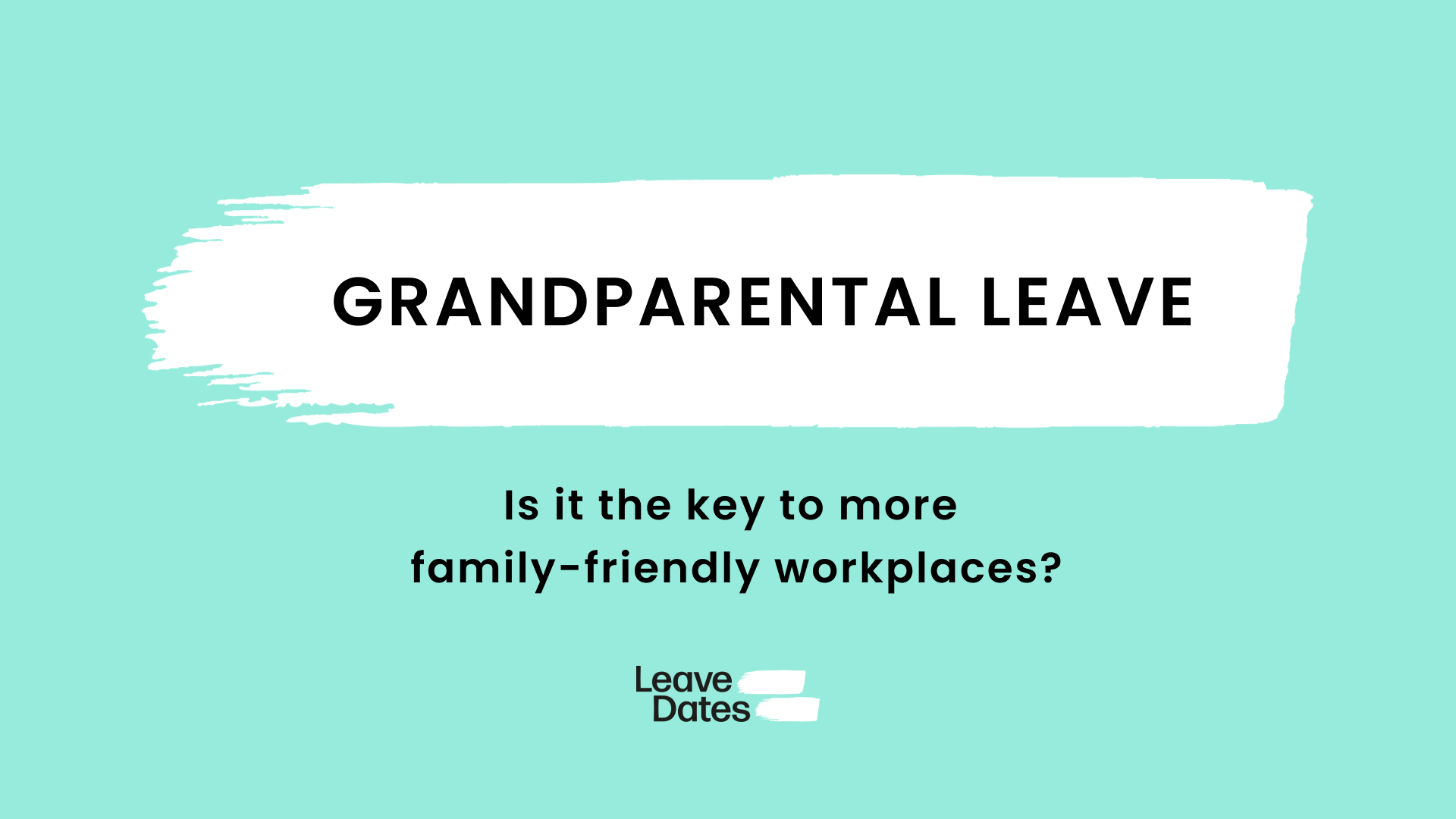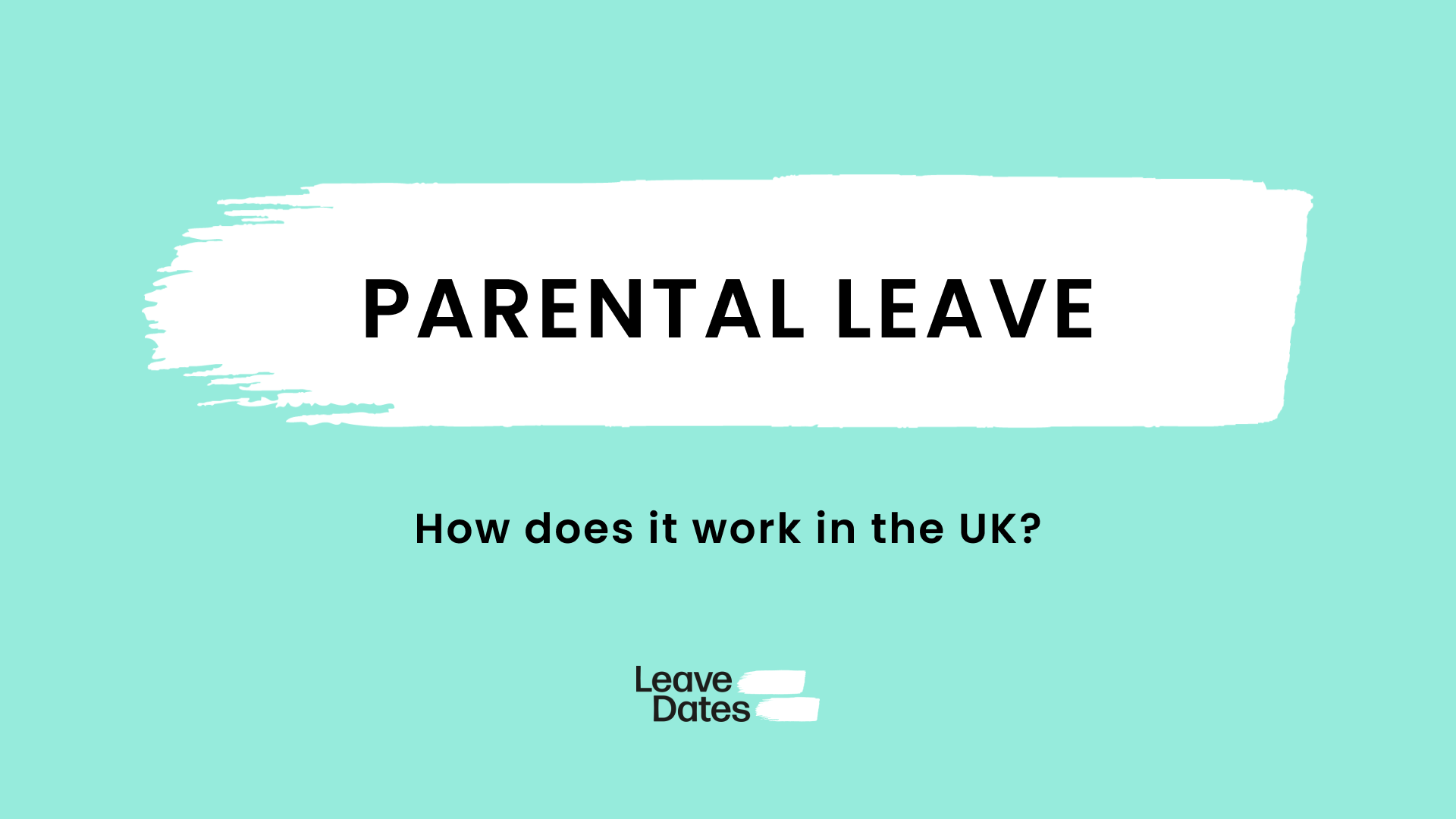
In this article, we explore how different parts of the world approach paternity leave, where the UK sits within this landscape and what potential for improvement there is (hint: a lot).
Table of contents
- Definition and importance of paternity leave
- History of paternity leave in the UK
- Global approaches to paternity leave
- Standout countries
- Strengthening paternity leave in the UK
- Key takeaways
Definition and importance of paternity leave
Paternity leave refers to a period of authorised, paid absence from work granted to fathers/partners following the birth or adoption of a child.
While maternity leave has long been acknowledged as crucial for the wellbeing of mothers and infants, in recent years, there has been increasing recognition of the significance of paternity leave and the value of fathers’ involvement in early childcare. It allows fathers/partners to bond with their newborns, actively participate in caregiving responsibilities and provide more support to the mother.
The importance of paternity leave extends beyond the immediate family, contributing towards the promotion of gender equality by challenging outdated gender roles and stereotypes and enabling men to engage in caregiving tasks traditionally associated with women. A further positive societal impact is that paternity leave fosters stronger parent–child relationships and healthy family dynamics, encouraging greater involvement of fathers in children’s upbringing.
From an economic perspective, (some) paternity leave policies support women’s inclusion in the workforce, giving mothers the option to return to work, rather than the default arrangement being that women stay home (and take a hit on their income and career). Paternity leave provides greater choice and flexibility of parental leave options, thus contributing to closing the gender pay gap and the disparity between the number of men and women holding senior positions. By supporting work-life balance, paternity leave also positively impact employee wellbeing and retention – ultimately enhancing workplace productivity.

The history and current state of paternity leave in the UK
In the UK, the right to paternity leave did not exist until 2003, when Statutory Paternity Pay (SPP) was introduced – though it was limited in duration and scope. Since then, there have been significant developments, reflecting the evolving understanding of fatherhood and the importance of gender equality in parental roles. In 2011, Additional Paternity Leave (APL) was introduced, allowing a further 26 weeks of unpaid leave.
So how much paternity leave are UK fathers entitled to? Let’s not beat around the bush, despite being one of the richest economies in the developed world, the UK’s statutory paternity leave offering is among the worst in Europe. Unless their employer offers a more generous scheme, fathers are entitled to just two weeks paid leave, at £172.48 or 90% of their average weekly earnings, whichever is lower, per week (the same as statutory maternity pay). This is less than the current real living wage for the UK.
Some fathers may be eligible for Shared Parental Leave (introduced in 2015) if their partner is receiving maternity pay/allowance, but this requires that their partner gives up (shares) their maternity leave. The weekly amount paid is the same. Considering the average full-time earnings of a UK man in 2022 was £683 per week, this is quite the income hit. Unsurprisingly, then, uptake is pretty low – 1 in 3 UK fathers take no paternity leave at all.
Regarding eligibility, paternity leave is available to a biological father (including via surrogate) or adoptive parent. Despite the gendered term, you don’t have to be male to claim it – if you are the partner of the birth/adoptive mother and expect to share the main responsibility for bringing up the child, you are entitled to paternity leave in the UK.
Global approaches to paternity leave
The culture and regulations around paternity leave vary significantly globally, reflecting diverse cultural norms, societal expectations and government policies.
A number of countries in Europe have embraced progressive paternity leave policies. In particular, Nordic countries are recognised for their generous and egalitarian parental leave systems, offering extended periods of fully paid leave for fathers. This reflects a drive in these countries towards gender equality.
In the US, paternity leave policies are rather limited, especially when compared to Europe. In fact, there is no federal policy mandating paid paternity leave whatsoever – it’s left up to individual states and employers to determine what, if any, provision they want to offer. This means there are huge disparities across states in terms of availability and benefits, with many still offering no paid paternity leave at all. Considering the huge medical expenses associated with pregnancy and childbirth under a private healthcare system, the lack of paid paternity leave is a significant barrier to US fathers taking time off to participate in child-rearing. This only reinforces the cultural norm and expectation that the father’s role is to earn money.
In Asia, paternity leave practices vary widely. Policies have been introduced in countries such as South Korea and Japan, but cultural expectations and workplace pressures often mean entitlements are not fully utilised. There are notable differences between East and West regarding cultural perceptions of paternity leave, which is reflected in the provisions available and the level of uptake where schemes are in place.
Broadly speaking, Eastern countries typically have a more collectivist culture and philosophy, where there is a high degree of social interdependence and hierarchical family structures. More traditional gender roles and norms are predominant, emphasising men as primary breadwinners and women as primary caregivers, and family obligations are expected to take precedence over personal desires. Even if a father might want to stay at home with a young child, he might feel an obligation to work and provide for the family financially instead, as less value is placed on fathers’ involvement in child-rearing.
By contrast, Western individualism values personal autonomy and self-fulfilment. In this context, there is a wider acknowledgement of fathers’ rights to take paternity leave. Western ideals have become more egalitarian regarding gender roles, influenced by feminist and progressive social movements, with growing recognition of the importance of involved fatherhood and an emphasis on work-life balance.
Standout countries: Denmark, Sweden and Iceland
Denmark is often cited as a world leader in paternity leave, with a generous and flexible system that encourages fathers to take an active role in childcare. Danish fathers are entitled to up to 14 weeks of paid paternity leave, with a further 32 weeks of parental leave that can be shared between parents. Compensation is calculated at a high percentage of the father’s salary; this provides the financial security needed to ensure the full leave period can be taken if desired. This approach indicates a genuine commitment to gender equality and recognition of the importance of fathers’ presence at home and involvement in parenting to the overall well-being of the family unit.
Similar to Denmark, Sweden focuses on promoting equal sharing of caregiving responsibilities between parents, with Swedish fathers entitled to up to 480 days of paid leave. Of those, 90 days are specifically allocated for fathers (cannot be transferred to the mother) on a ‘use it or lose it’ basis, to incentivise fathers to take paternity leave. Again, the leave provisions are well-paid and, combined with cultural norms that support involved fatherhood, this has resulted in high rates of uptake.
Iceland is somewhat of a trailblazer in gender equality efforts, so it’s not surprising that its paternity leave provision is also one of the most generous in the world. Icelandic fathers are entitled to 12 weeks of dedicated paternity leave and access to a total of 9 months of shared parental leave that can be divided between two parents. This has contributed to a cultural shift in Iceland, where fathers are perceived and valued as equal partners in parenting leading to greater work-life balance and gender equality, from which the whole of Icelandic society benefits.
Strengthening paternity leave in the UK
The UK is not considered a leader in this space, with Nordic countries seeming to share this crown, yet as a broadly progressive, rich country, there is no reason why it shouldn’t be. The biggest issues with the UK paternity leave provision are the short duration and the low pay. Of these, the financial burden is the biggest initial barrier to overcome – according to the TUC, over half of the families who take paternity leave struggle financially. If people can’t even afford to take two weeks on current allowances, then a longer leave duration is a moot point.
Men across the UK are joining the Dad Shift campaign, pushing for improved rights for new Dads and calling on the Prime Minister to act. The campaign has seen life-size public statues of men around London draped with slings and model babies. The simple, inoffensive, yet disruptive sight has drawn good attention to their cause, which ultimately aims to allow fathers more time with their children without experiencing financial hardship.
There is a clear economic argument for increasing paternity (and maternity) pay. Enabling parents to take more (and better paid) time off in early parenthood allows them to combine caring with employment and remain in the labour market. In doing so, they will contribute more to overall economic productivity over their lifetime.
Ungenerous policies that force people back into work quicker than they’d like, or discourage them from taking leave at all, are economically short-sighted. First, they are more likely to lead to people (mothers, usually) leaving the workforce, negatively impacting economic activity. Second, it feeds the declining birth rate in the UK, as people decide they cannot afford to have more (in some cases, any) children – this is an economic time bomb that could mean there aren’t enough workers (i.e. taxpayers) to support the ageing population when they retire.
Paternity leave shouldn’t be a difficult thing to manage. Most of the time (though admittedly not always!) you know when a baby is on the way, which allows plenty of time for advance planning – of leave, cover and flexible working arrangements – through a digital leave planner. We’ve been managing maternity leave and cover for decades; it wouldn’t be difficult to do the same for fathers. This would also contribute to ending the motherhood penalty that women suffer in the workplace, as parental leave could be spread across the whole population of parents in an organisation rather than just one demographic.

The problem and the solution are two-pronged: egalitarian and generous policy must come hand in hand with increased cultural acceptance of paternity leave and valuing fathers’ involvement in childrearing. Government policy is essential in ensuring the provision is there, but cultural expectations are critical to ensuring there is uptake. This has been much more successfully achieved in Nordic countries, and the UK could learn much from our northern neighbours in this regard.
Key takeaways
Paternity leave is an invaluable opportunity for fathers/partners to bond with their children, share the load and adjust to new parenthood. Despite recent advancements, the UK’s approach to paternity leave still lags behind other countries, particularly in Northern Europe. The limited duration of leave and low pay rates pose significant barriers for fathers seeking to take a more active role in their children’s early years, particularly as the cost of living increases.
In a nation with a declining birth rate, pro-natalist policies are essential
The current paternity leave (and indeed maternity leave) provision cannot be considered to satisfy this need when the amount paid is not sufficient to support a family – until it is, the uptake of paternity leave will remain low and the burden of childcare will continue to fall disproportionately on women. In this scenario, the UK will miss the many societal and economic benefits of generous and gender-balanced parental leave.
Perhaps there is a future where there is no such thing as maternity/paternity leave, simply ‘parental leave’, to be divided amongst caregivers in whatever way the family concerned chooses. With an increasing number of families with non-traditional structures and routes to parenthood, from solo parents to rainbow families, this generous, flexible, egalitarian and un-gendered approach feels like the right direction for the UK to move in.
FAQs
How does the UK compare to other European countries in terms of the duration and pay of paternity leave?
Compared to other European countries, the UK's paternity leave policies are considered less generous. Nordic countries like Denmark, Sweden, and Iceland lead in offering longer and better-paid paternity leave. For example, Denmark provides up to 14 weeks of paid paternity leave, while Sweden offers fathers up to 480 days of paid leave, with a specific allocation for fathers on a 'use it or lose it' basis.
What are the impacts of paternity leave on gender equality and workplace productivity?
Research generally supports the idea that paternity leave contributes to gender equality and workplace productivity. Countries with more inclusive paternity leave policies often show increased paternal involvement in childcare, leading to better family dynamics. Additionally, enabling parents to take time off for early parenthood has economic benefits, as it allows them to balance caregiving with employment, contributing more to overall economic productivity.
What measures are recommended to change societal attitudes towards paternity leave in the UK?
A two-pronged approach is necessary to promote paternity leave in the UK. There should be egalitarian and generous policies, including increased cultural acceptance of paternity leave and valuing fathers' involvement in childrearing. Nordic countries serve as examples where both government policies and societal expectations align to encourage fathers to take paternity leave. The UK could learn from these countries and implement similar strategies to shift cultural norms and expectations regarding paternal involvement in childcare.



